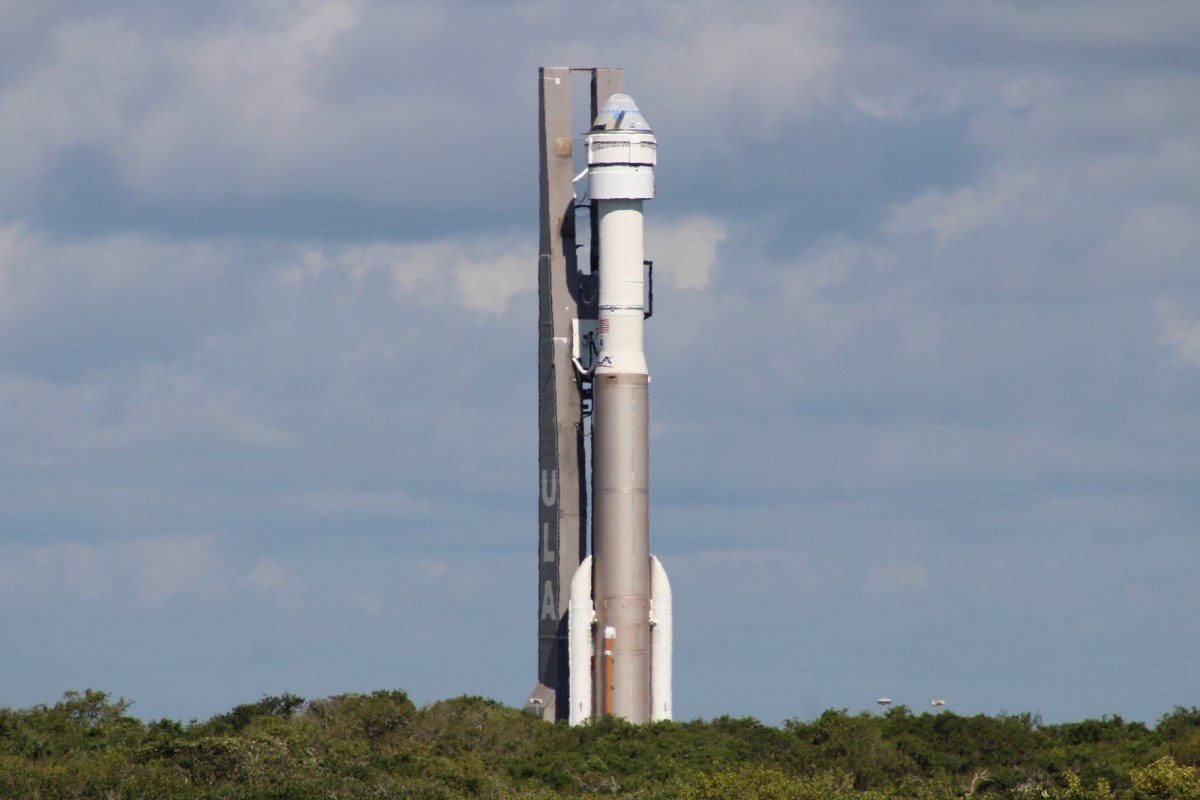KENNEDY SPACE CENTER, Fla. — The upcoming launch of Boeing’s CST-100 Starliner will mark not just the first time the spacecraft has carried astronauts but also the first crewed launch of the Atlas 5, a vehicle approaching its retirement.
The Crew Flight Test (CFT) mission remains on track for a launch at 10:34 p.m. Eastern May 6. The Atlas 5 rocket carrying the Starliner spacecraft rolled out to the pad May 4, with no technical issues reported and favorable weather in the forecast.
The CFT mission marks the 100th flight of the Atlas 5, which made its debut in 2002. The mission, though, marks the first time the rocket has carried astronauts.
United Launch Alliance has made a few changes to the rocket to support crewed flights. That includes adding an emergency detection system that monitors the launch vehicle’s systems and feeds that information into Starliner so that it can trigger its abort system in the event of a rocket malfunction. This version of the Atlas 5 also uses a Centaur upper stage with two RL10 engines, a configuration not used on other missions but similar to versions of Centaur previously flown on other launch vehicles and also used on ULA’s new Vulcan rocket.
There are few other changes to the rocket compared to those used for satellite launches. “The vehicle is pretty much a standard Atlas 5 vehicle. It goes through the same standard procedures and processes,” said Gary Wentz, vice president of government and commercial programs at ULA, at a May 3 briefing.
Certifying the Atlas 5 to carry NASA astronauts, though, required extensive work: between 11,000 and 12,000 individual verifications of vehicle components and processes, said Ian Kappes, deputy manager of the Launch Vehicle Systems Office for NASA’s Commercial Crew program, in an interview.
That meant going through documents from decades ago, when the rocket was being developed. “We really had to work with our ULA partners to go find paperwork from 20 years ago, to go in there and really look at the data on Atlas 5 and Centaur,” he said, including one document he described as containing hand calculations.
One particular challenge for that assessment was getting data for the Russian-built RD-180s engines that power the Atlas booster. “From the launch vehicle office, the biggest risk that we had to accept was that there’s only a certain amount of insight that you’re going to get,” he said.
The Atlas 5 on its way to the pad at Space Launch Complex 41 May 4 for the Boeing CST-100 Starliner launch. Credit: SpaceNews/Jeff Foust
Kappes said there is not a specific risk metric that Atlas 5 had to meet for a crewed flight, citing the need to balance making the vehicle as safe as possible while recognizing that not all risks can be eliminated. “It’s a case-by-case basis,” he said, working with ULA to assess specific risks. “What can we do to bring this down?”
“We’re trying to be as safe as we can be,” he added, “but I also can’t crush our commercial partner. I can’t say I need to you need to make this thing 100% safe because then it’s not economical for them.”
After CFT, Boeing has a contract with NASA for six operational Starliner flights, all launching on Atlas 5. ULA, though, is no longer selling the Atlas 5 as it works to shift to the Vulcan Centaur, meaning any additional Starliner missions, for NASA or other customers, would need to move to another rocket like Vulcan.
“We’re continuing to do different studies” about human-rating Vulcan, ULA’s Wentz said. He noted much of the hardware between Atlas and Vulcan is common, with the switch from kerosene-fueled RD-180 engines to methane-fueled BE-4 engines the biggest change.
Mark Nappi, vice president and program manager of Boeing’s commercial crew program, said at the briefing that his company had been working with ULA on human-rating Vulcan for Starliner. “That’s what we’ve been working on for the last year and a half or so, just understanding what is it going to take,” he said. “We have a pretty good understanding of that now.”
Kappes said his office is starting to think about what would be needed to certify not just Vulcan but also other vehicles, like Blue Origin’s New Glenn, for crewed launches. “We are definitely looking ahead,” he said, capturing lessons learned from both Atlas 5 and Falcon 9. “My team would love to get their hands on some additional data from other vehicles.”
